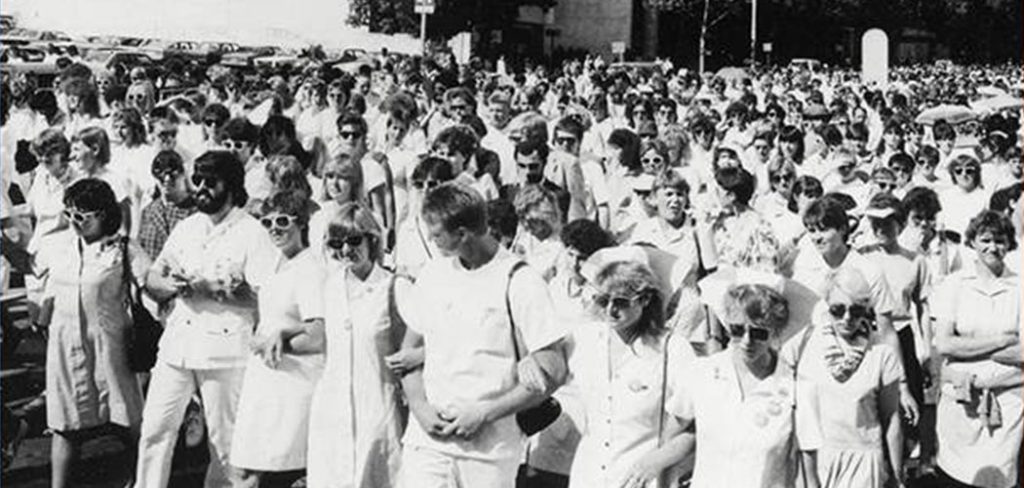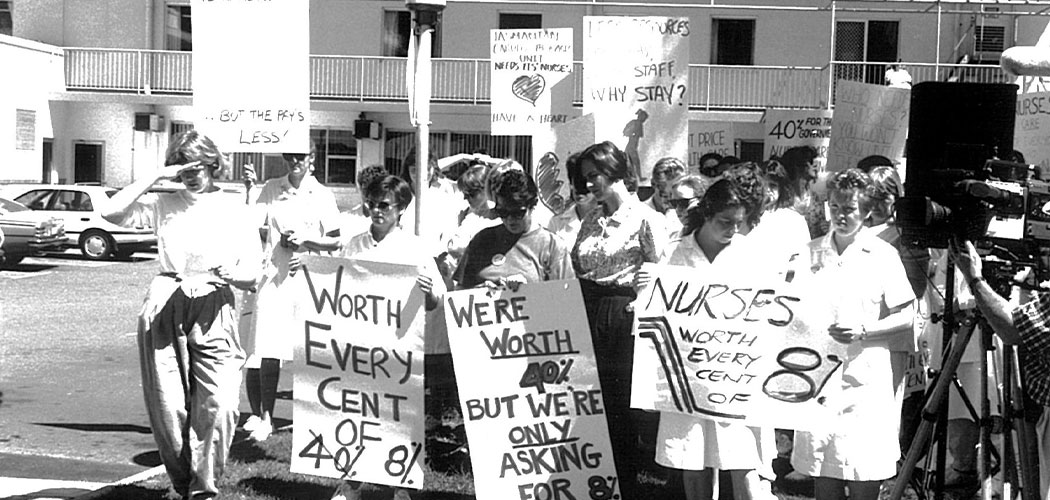The working lives of nurses and midwives have undergone significant transformation over the past 100 years.
In 1938, a typical staff nurse in Victoria earned just two pounds, four shillings, and four pence, for a 50-hour work week, caring for 10 patients during the day and 15 at night. These early nurses’ responsibilities extended far beyond nursing at the bedside and medication administration to domestic tasks such as mopping floors, doing laundry, and assisting in meal preparation.
Undeniably, the evolution of nursing into the professional field we know today was achieved through decades of collective action from the ANMF and its members. We fought tirelessly for improvements to better wages and conditions, including the introduction of penalty rates and landmark staffing ratios.
Penalty rates, for instance, were introduced around the country through the 1950s and 60s as part of broader reforms to compensate workers, including nurses, for working outside standard hours, such as nights, weekends, and public holidays. Looking back, under the 1977 Victorian Nurses’ Award, nurses whose shifts ended between 6pm and 8am or started between 6pm and 6.30am received an additional $2.66 per shift.
The 1970s marked a turning point in the working lives of nurses and midwives, as industrial action became more prominent and calls for change intensified.
The 1986 Victorian nurses’ strike remains one of the most significant moments in Australian nursing history, made possible after the Royal Australian Nursing Federation’s (RANF), now ANMF (Vic Branch), voted in 1984 to remove the no-strike clause from its rules.

The 50-day strike rallied against cuts to health, low wages, high patient loads and attempts to downgrade nurses into lower qualifications.
Unprecedented in scale and duration, the industrial action, which involved a wave of walkouts and 24-hour picket lines, gained widespread public support, leading to an improved package offer from the then Cain Government, delivering wage rises, the return of qualification allowances and a new career structure.
More broadly, the victory underscored the power of collective action in securing fair working conditions for nurses and ensuring quality healthcare for patients.
The 1980s, of course, also saw nursing education transition to the tertiary sector, starting with NSW in 1985 and soon followed by other states and territories. This shift coincided with another landmark campaign for professional rates of pay and full professional status.
In 1989, the NSW Nurses’ Association successfully argued before the NSW Industrial Relations Commission for ‘Professional Rates’ for public hospital nurses, stating that nurses trained and educated under the new tertiary system should be classified as ‘professional’ employees just like other health disciplines. The determination closely followed a similar claim by the RANF in the Victorian Commission.
These cases paved the way for greater uniformity in professional rates of pay and federal award structures nationally. By 1990, entry level nurses were paid the same as equivalent professional scientific officers in hospitals for the first time.
More recently, the ANMF has played a leading role in securing nurse-to-patient ratios across the nation to ensure enough nurses are employed to safely deliver care to patients. Pioneered by Victoria in 2000, they are now being adopted across the country. The ANMF has also successfully championed historic Work Value cases before the Fair Work Commission over the past couple of years, achieving pay increases for aged care workers by demonstrating that their work has been significantly undervalued due to historical gender-based reasons.









